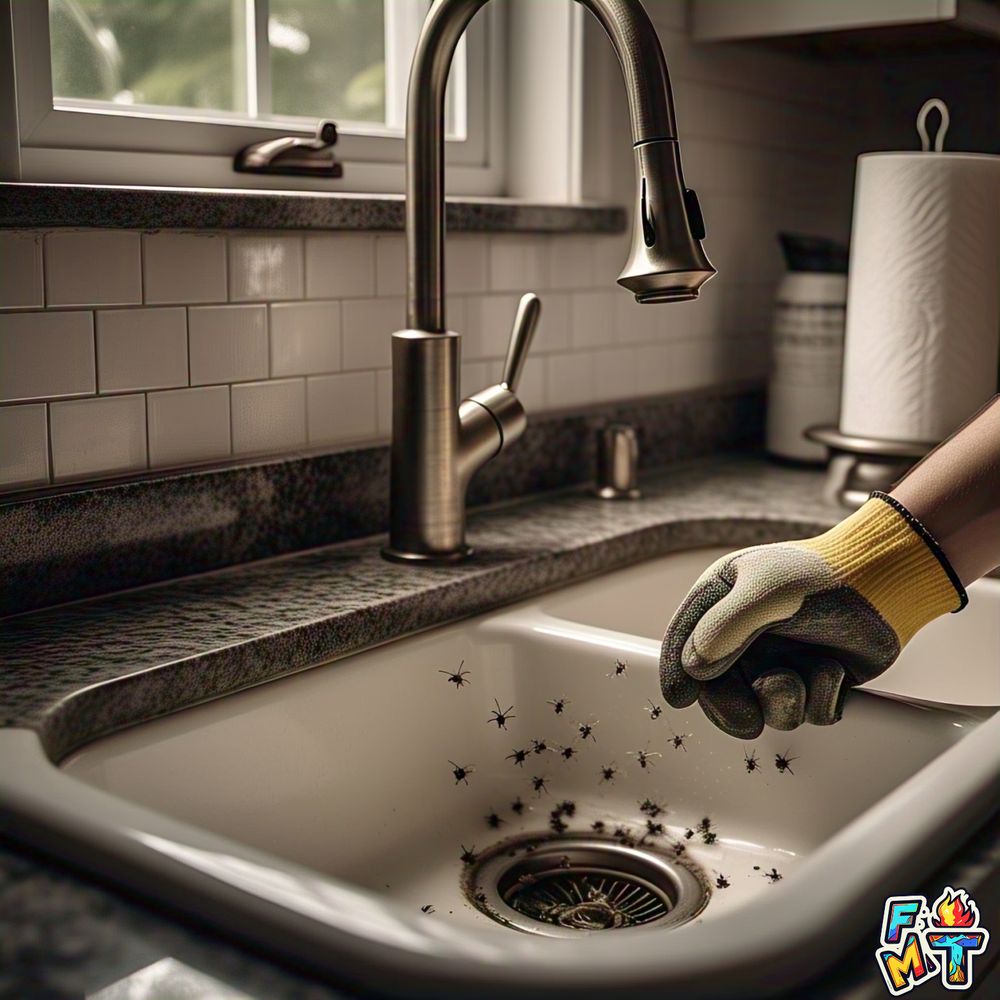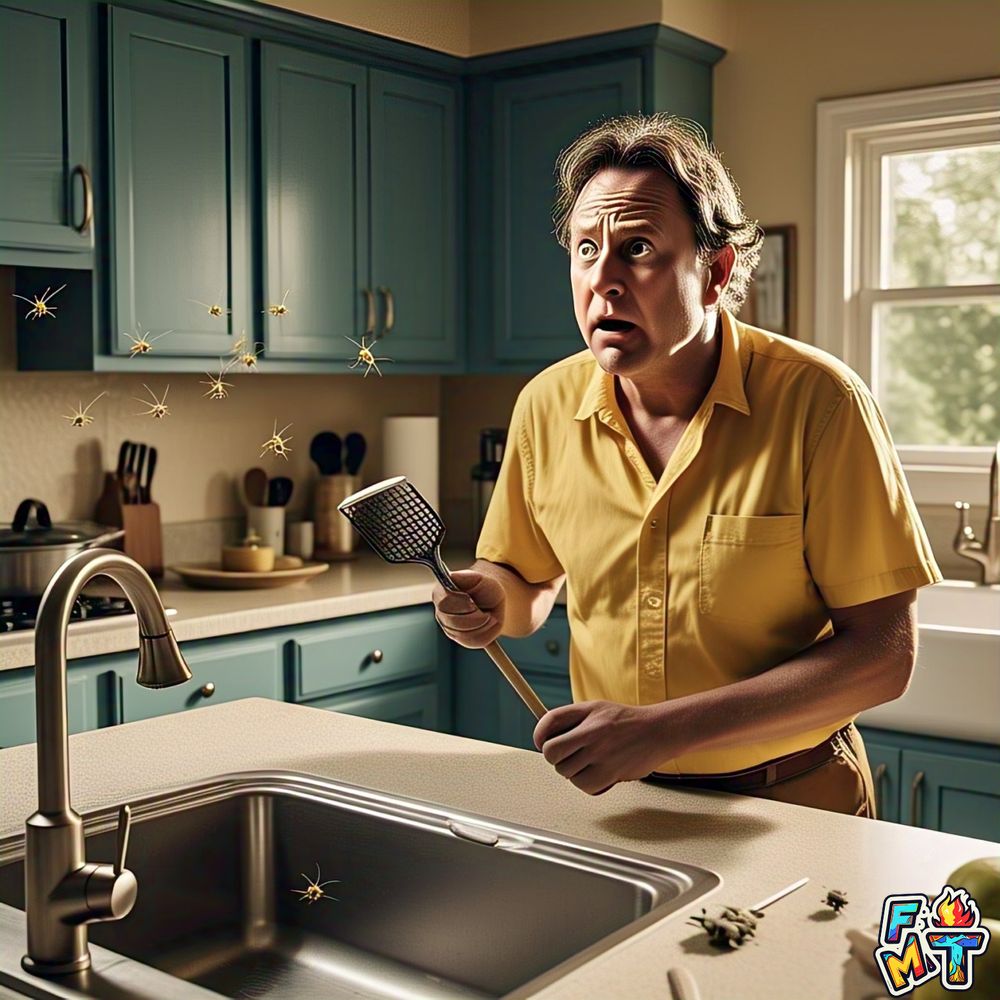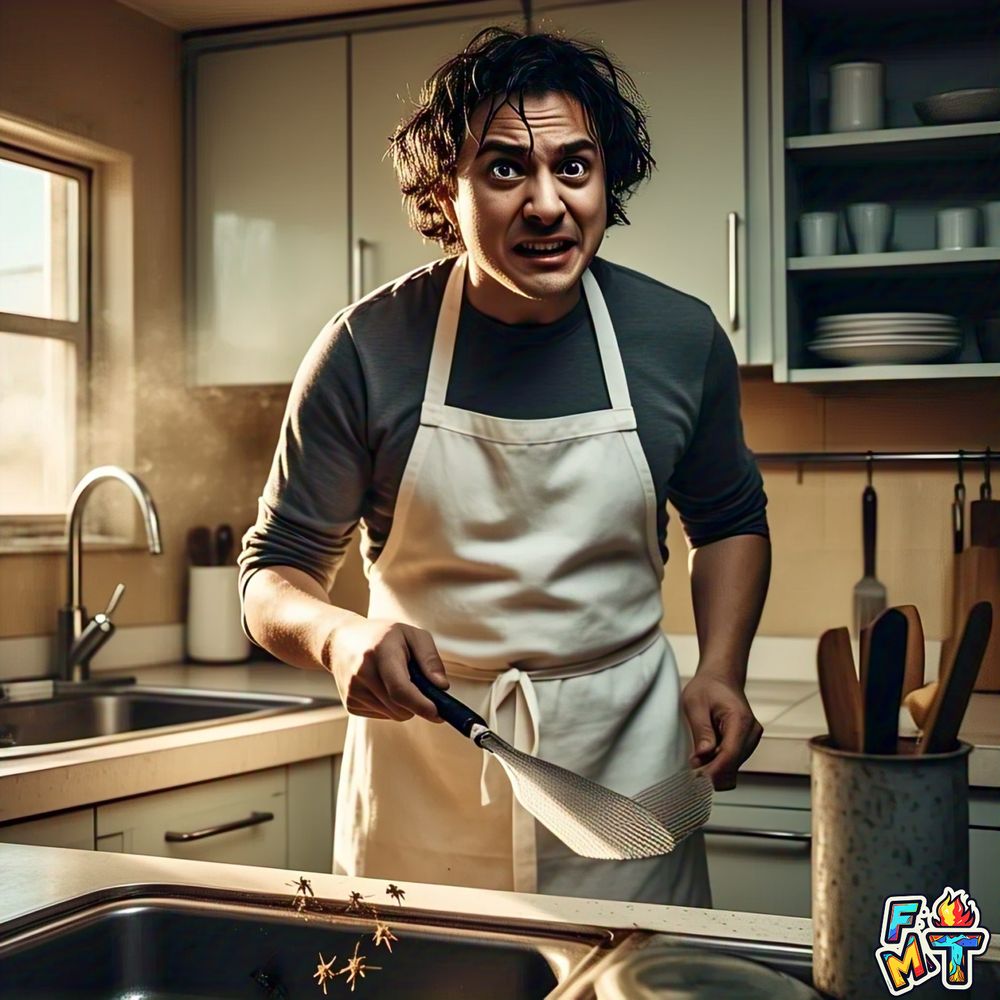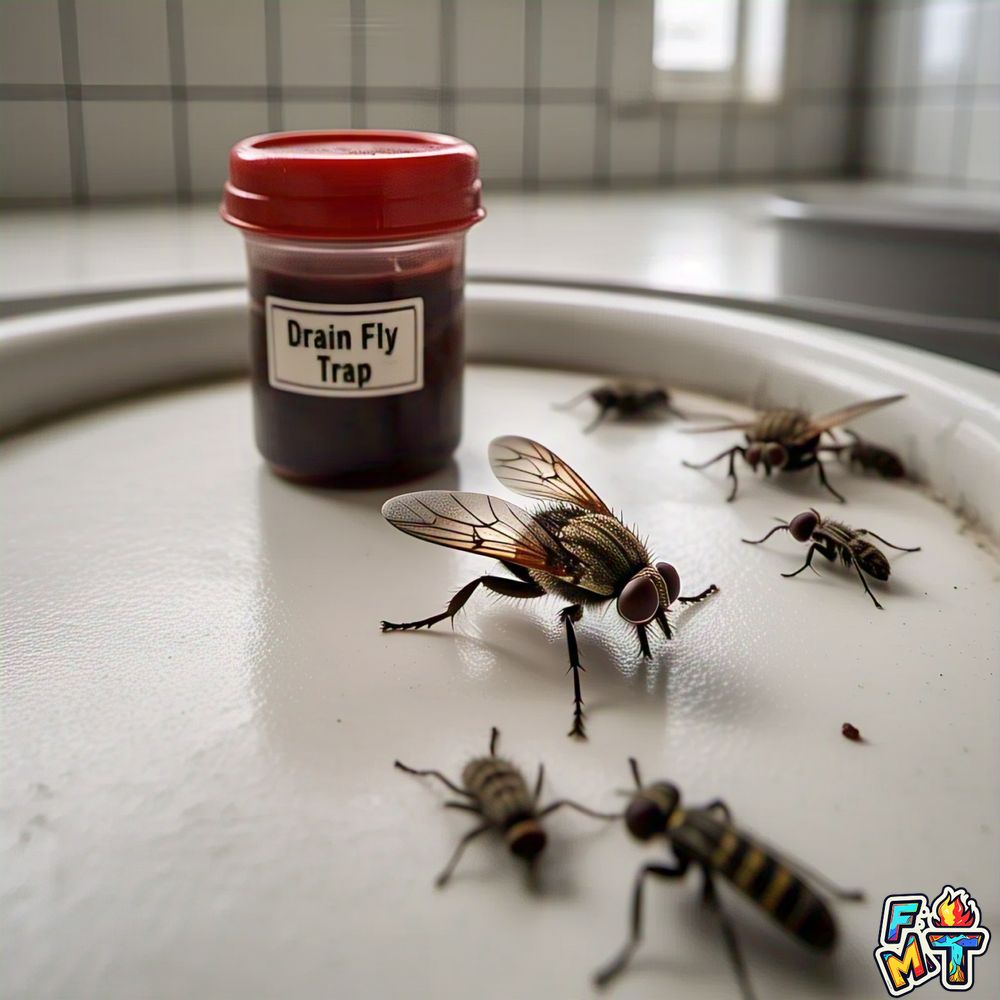Blog
How To Get Rid Of Drain Flies?
Understanding Drain Flies and Their Behavior
What Are Drain Flies?
Drain flies, often referred to as sewer gnats or drain gnats, are small flying insects typically found in damp, dirty areas around the house. These pests are often mistaken for fruit flies due to their small size and similar appearance. They have distinctive furry bodies and large wings that give them a moth-like appearance. Drain flies are usually seen near drains, pipes, sinks, and even on the walls of bathrooms where moisture tends to collect.
These flies breed in decaying organic matter, which is why they are commonly found in drains, garbage disposals, and even sewer systems. Their larvae feed on the organic matter inside pipes, which allows them to thrive and reproduce.
Why Do You Have Drain Flies in Your Home?
If you’re wondering why drain flies are appearing in your home, the reason is quite simple: they are attracted to dirty drains and stagnant water. These pests thrive in damp environments where organic material, such as hair, grease, soap scum, and food residue, builds up inside drains. When these organic materials start to break down, they provide an ideal breeding ground for drain flies.
Additionally, a lack of regular pipe cleaning or drainage maintenance can lead to the accumulation of waste in the pipes, increasing the likelihood of an infestation. So, if you’ve been experiencing a drain fly infestation, it’s likely due to a buildup of organic debris that’s creating the perfect environment for these pests.
How to Eliminate Drain Flies Effectively
Best Methods to Get Rid of Drain Flies
If you’re dealing with a drain fly problem, there are various natural remedies and DIY drain fly treatments you can try before resorting to commercial products. Here are a few methods that can help:
- Vinegar and Baking Soda: One of the most effective and natural ways to deal with drain flies is by using a vinegar and baking soda solution. Start by pouring a cup of baking soda into the drain, followed by a cup of vinegar. Let it sit for at least 30 minutes, then flush the drain with hot water. This will not only clean the pipes but also kill any drain fly larvae present.
- Enzyme Cleaners: These cleaners are great for breaking down the organic material that drains flies feed on. Using an enzyme cleaner can clean your pipes while eliminating the breeding ground for drain flies.
- Boiling Water: Pouring boiling water down your drains can help dissolve grease and debris, which may be attracting drain flies. Be sure to do this regularly as a preventive measure.
Commercial Drain Fly Extermination Solutions
If natural remedies don’t do the trick, there are several commercial solutions available to help you eliminate drain flies. Some of the most effective products include:
- Drain Fly Traps: These traps attract and capture adult flies, helping to reduce the population over time.
- Insecticides: Available in spray or foam form, these products target adult drain flies and kill them on contact.
- Bio-Drain Cleaners: These specialized cleaners are designed to break down organic buildup inside pipes and eliminate drain flies by targeting their larvae.
Make sure to choose products that are both effective and safe for household use, especially if you have pets or children in your home.

Preventing Drain Flies in the Future
How to Prevent Drain Fly Infestation
After you’ve managed to eliminate drain flies, it’s important to take steps to prevent future infestations. Here are some tips to keep your drains fly-free:
- Regular Drain Cleaning: Make sure to clean your drains regularly using natural methods like vinegar and baking soda or invest in a commercial drain cleaner.
- Fix Any Leaks: Leaky pipes provide the perfect environment for drain flies to thrive. Check your plumbing system and repair any leaks immediately.
- Install Drain Screens: Placing drain screens or filters over your sink drains can prevent debris and organic material from entering the pipes, which reduces the chances of drain flies breeding.
Regular Maintenance to Keep Drain Flies Away
To maintain a fly-free environment in your home, make drain cleaning a part of your regular maintenance routine. You should clean your drains at least once a month, especially if you notice an increased presence of drain flies or other pests.
Additionally, consider using natural drain fly repellents such as essential oils. Many oils, like eucalyptus, peppermint, or tea tree oil, can be used to repel drain flies naturally.
How to Identify a Drain Fly Infestation
Signs of Drain Fly Infestation
Identifying a drain fly infestation early is key to preventing a larger problem. Here are the common signs that you may have a drain fly issue:
- Presence of Small Flies: If you notice small, moth-like flies around your bathroom, kitchen, or sinks, it’s a clear sign of an infestation.
- Dirty Drains: If your drains look grimy or emit a foul smell, there’s a chance they’re harboring drain flies.
- Fly Larvae: In some cases, you may spot drain fly larvae inside the drain, which appear as small, whitish worms.
How to Tell the Difference Between Fruit Flies and Drain Flies
It’s easy to confuse drain flies with fruit flies. However, there are a few distinguishing factors:
- Drain Flies: They have fuzzy bodies and large wings and tend to stay close to the source of moisture. They are usually found near drains, pipes, and other damp areas.
- Fruit Flies: These are smaller and have smoother bodies. They are typically found near food sources, like overripe fruit or spilled liquids.
By observing their behavior and environment, you can easily determine if you’re dealing with drain flies or fruit flies.

Additional Tips and Tricks for Drain Fly Control
Using Vinegar and Baking Soda for Drain Fly Removal
As mentioned earlier, using a combination of vinegar and baking soda is one of the most effective ways to remove drain flies. Here’s how to do it properly:
- Pour 1 cup of baking soda into the drain.
- Follow with 1 cup of vinegar and cover the drain to keep the reaction inside the pipe.
- Let it sit for 30 minutes to an hour.
- Afterward, flush the drain with boiling water to clear any remaining debris.
This natural cleaning solution works wonders in breaking down organic matter and killing drain fly larvae.
How to Clean Drains to Remove Drain Flies
To completely remove drain flies, cleaning your drains thoroughly is a must. Here’s how to clean your drains effectively:
- Use a pipe brush or plumbing snake to physically scrub the inside of your drain.
- Pour a cleaning solution like enzyme cleaners or bleach to disinfect and break down any remaining organic material.
- Flush the drain with hot water to remove the debris.
By ensuring your pipes are clean, you reduce the chances of drain flies finding a home in your drain.
Conclusion
Final Thoughts on Drain Fly Removal
To sum up, getting rid of drain flies requires a combination of proper cleaning, natural remedies, and, if necessary, commercial extermination products. By regularly cleaning your drains and using preventative measures, you can keep these pesky pests at bay.
If you follow the methods outlined in this guide, you’ll be well on your way to solving your drain fly infestation and ensuring that they don’t return. Be proactive about drain maintenance, and you’ll enjoy a clean, pest-free home.

Frequently Asked Questions (FAQs)
Q1: How do I know if I have a drain fly infestation?
- Look for small, moth-like flies near drains, a foul smell from pipes, or visible larvae in your drains.
Q2: Can I use vinegar to get rid of drain flies?
- Yes, a combination of vinegar and baking soda can effectively eliminate drain flies by cleaning your pipes and killing larvae.
Q3: How can I prevent drain flies from coming back?
- Regularly clean your drains, fix any plumbing leaks, and use natural drain fly repellents to keep them away.
Please visit Dinounicorn.com or Freshmilktee.com to support us. Thank you!

